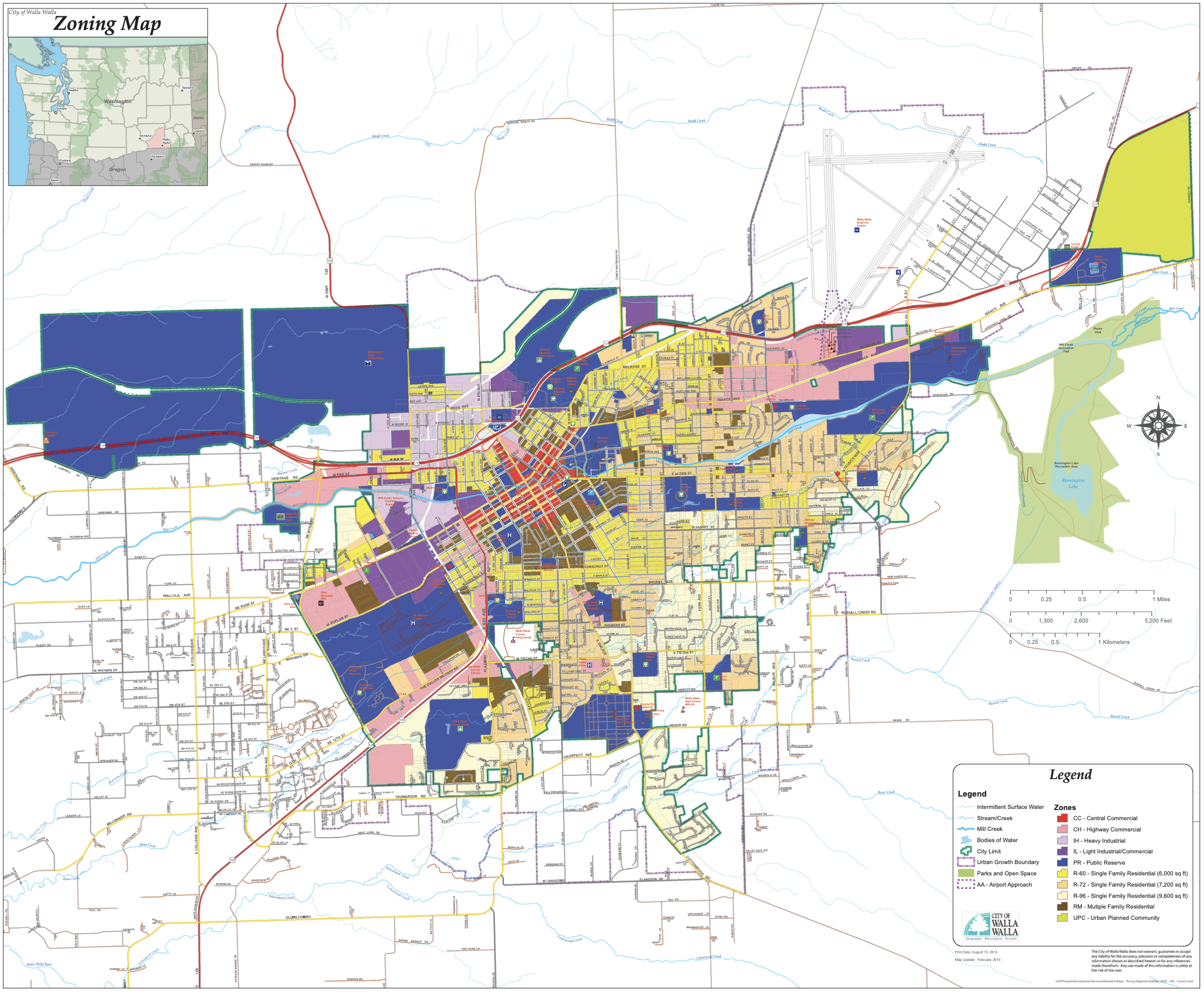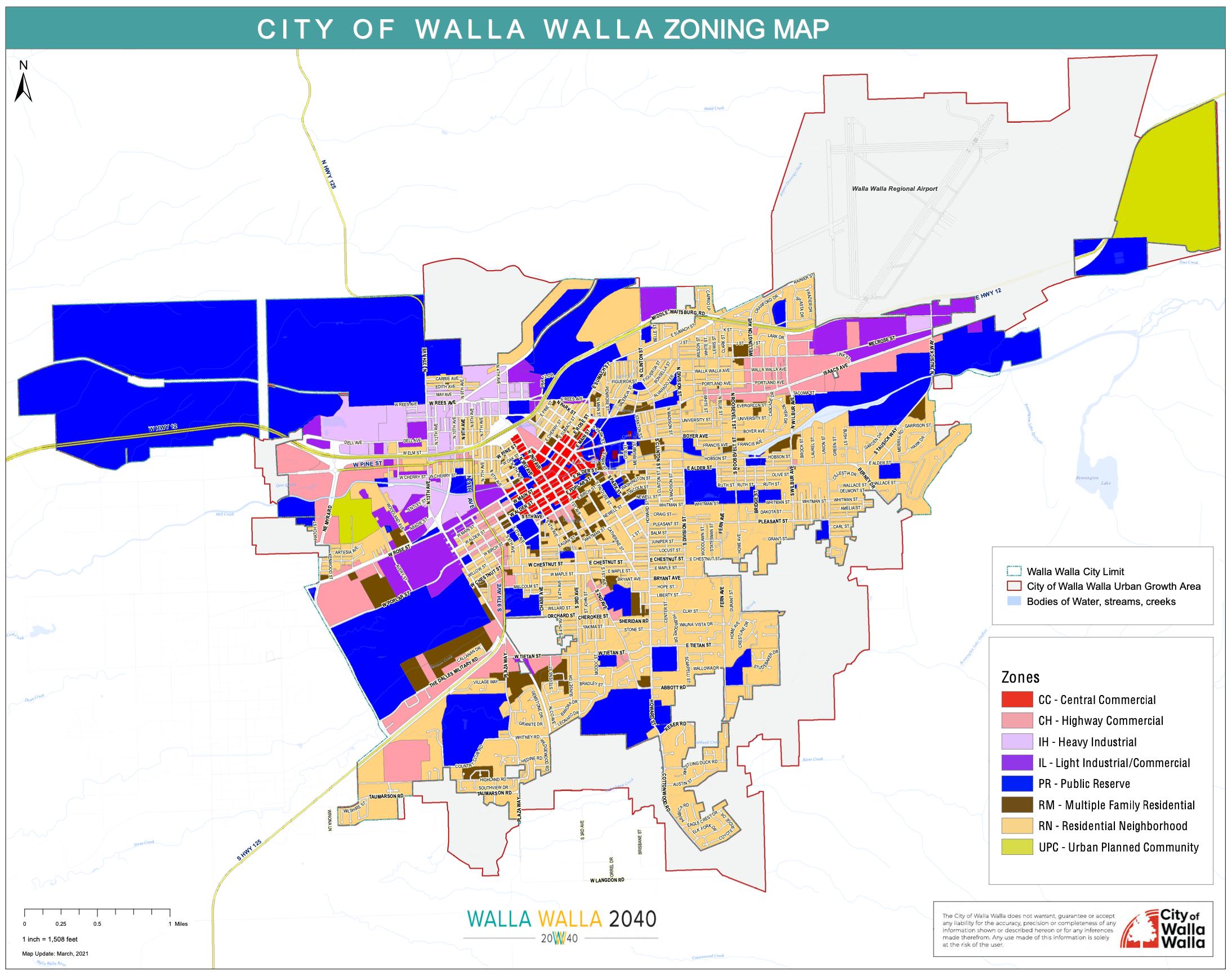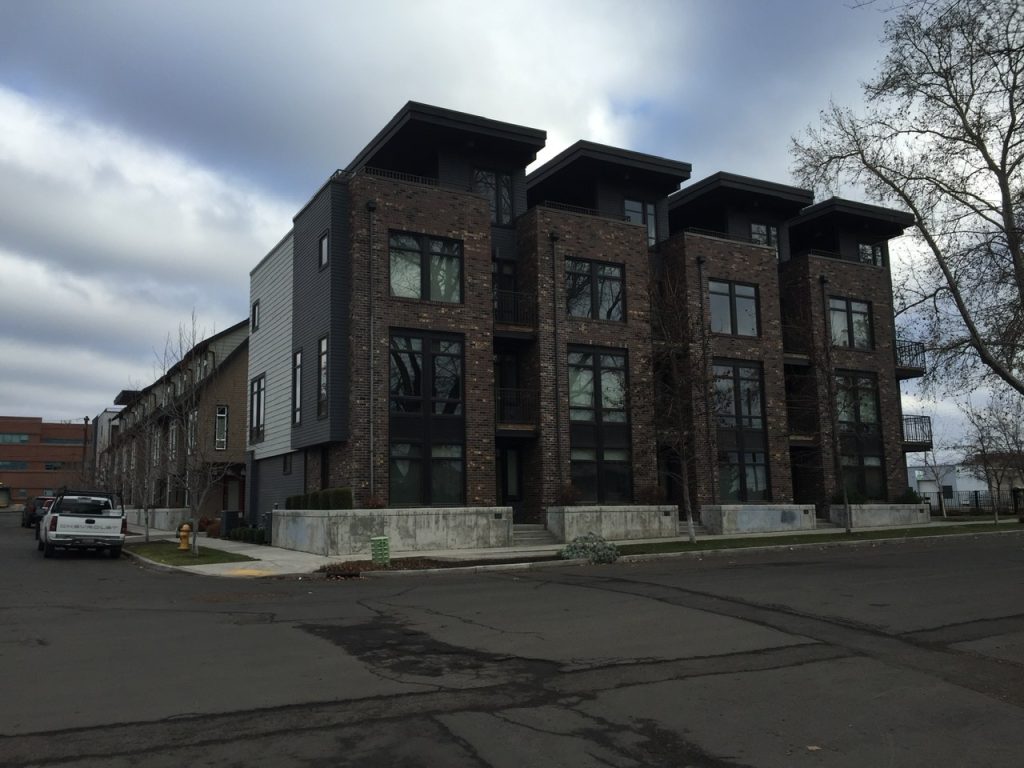Walla Walla flew under the radar in 2018 when the city adopted zoning changes entirely eliminating single-family zones. These zoning changes alongside the new city comprehensive plan went by without much fanfare after a nearly two-year process, despite the sweeping reforms for a city of about 33,000 residents.
Nestled in Eastern Washington near the famed rolling Palouse hills, the small city has seen modest growth over the past two decades, increasing by 3,214 (10.8%) residents from 29,686 in 2000 to 32,900 in 2019. By 2038, the city is expected to grow a further 6,370 (20.2%) residents to 39,530. Zoning changes precipitated by the city’s major comprehensive plan update to meet this growth meant that the city had to take reasonable actions to support that level of growth primarily within the city and urban growth area.
Thus, the scope of zoning changes was broad encompassing things like procedural processes, subdivision standards, street connectivity requirements, and adaptive reuse of non-residential buildings in residential zones. However, some of the most significant changes were the consolidation of single-family zoning into a single low-density zoning type, a wider variety of allowed uses in the lower density zone, a reduction of residential parking requirements, and more flexible accessory dwelling unit regulations.
Walla Walla’s zoning changes, explained
Among the zoning changes, the big topline one is consolidation and reform of single-family zones. Prior to the 2018 changes, Walla Walla had three flavors of single-family zones, which ranged from requirements for 6,000-square foot to 9,600-square foot lots. This in essence meant that four to seven single-family lots could be created per acre of land, depending upon the single-family zoning type, with some exceptions. As far as permitted uses went, the zoning regulations had a preference for single-family homes with generally one per lot. However, congregate housing, nursing care facilities, and even duplexes were permitted on a limited basis, often with special approval required.
With the new Neighborhood Residential zone in place, the spectrum of uses allowed is much broader with greater flexibility in density on lots. The city’s zoning code even states plainly that “The Neighborhood Residential Zone is intended to provide for a variety of housing types such as single family residential up to fourplexes, townhomes, cottage housing and tiny homes that are compatible with the neighborhood characteristic.”
Given that most of the city is zoned for lower density residential, the 2018 changes resulted in a very large citywide rezone to Neighborhood Residential (RN). (Compare the before and after zoning maps in the slider below.) One unfortunate consequence of this though is that some areas zoned Multiple Family Residential (RM) were downzoned to Neighborhood Residential; this is most prevalent around the city’s historic and commercial core. However, the zoning changes also eliminated a penalty on smaller lots for density and increased maximum density from 26 to 75 dwelling units per acre.


Generally speaking, the Neighborhood Residential zone allows for higher lot coverage, smaller setbacks, reduced parking requirements, and no minimum lot sizes, widths, or depths. The following table offers a generalized comparison between the Neighborhood Residential zoning and the single-family zones it replaced:
| Development Standard | RN Zone | R-60 (High Density) | R-72 (Medium Density) | R-96 (Low Density) |
|---|---|---|---|---|
| Generally Permitted Residential Uses | Townhouses, cottage housing, tiny houses, fourplexes, triplexes, duplexes, accessory dwelling units, and single-family homes | Single-family, duplexes, accessory dwelling units, congregate, and nursing care | Single-family, accessory dwelling units, congregate, and nursing care | Single-family, accessory dwelling units, congregate, and nursing care |
| Lot Size | None | 6,000 square feet, except in certain cases | 7,200 square feet, except in certain cases | 9,600 square feet, except in certain cases |
| Lot Width and Depth | None | Width: 50 feet Depth: 60 feet | Width: 50 feet Depth: 60 feet | Width: 75 feet Depth: 80 feet |
| Front, Side, and Rear Setbacks | Front: 20 feet Side: 5 feet, except 0 feet if attached housing Rear: 20 feet | Front: 20 feet Side: 5 feet Rear: 20 feet | Front: 20 feet Side: 5 feet Rear: 20 feet | Front: 20 feet Side: 10 feet Rear: 20 feet |
| Height Limit | 35 feet | 35 feet | 35 feet | 35 feet |
| Parking Requirements (Per Dwelling Unit) | Single-family dwelling units: two parking spaces Duplexes: two parking spaces Multifamily dwelling: one and one-half parking spaces Studio apartments, cottage housing, and accessory dwelling units: one parking space | Two parking spaces, except one parking space for accessory dwelling units | Two parking spaces, except one parking space for accessory dwelling units | Two parking spaces, except one parking space for accessory dwelling units |
All of these new Neighborhood Residential development standards allow for much more to be constructed on lots and legalize missing middle housing in areas where they were banned.
In terms of parking, the Neighborhood Residential zone has reduced residential parking requirements, as noted in the table above. These essentially apply across all zones in the city for residential uses. The standards are fairly high for multifamily and duplex units, but they do offer some measure of relief for other smaller housing types, like cottage housing and studio apartments. Additional parking provisions added in 2018 provide for further reduction if certain circumstances are met, such proximity to a frequent transit stop, dedicated parking for carpool and vanpools, additional on-site bike parking, or on-site provision of an electric vehicle charging station.
As for accessory dwelling units, the new regulations are far less restrictive than before, allowing one per lot as either attached or detached:
- The maximum size is 800 square feet and no longer has limitations in relation to the principal dwelling unit;
- Owner-occupancy requirements have been eliminated;
- Approval is ministerial through a building permit and no longer requires any special approvals; and
- Accessory dwelling units may also be accessory to duplexes instead of only to single-family dwelling units (this was a change in 2019).
All-in-all, the accessory dwelling unit regulations tend to follow many of the contemporary best practices to encourage creation of units.
The takeaway
Walla Walla’s approach with the Neighborhood Residential zone is particularly uncommon in Washington as it doesn’t have a defined density limit — something that most cities tend to use in lower-density residential zones. Instead, the zoning code simply relies upon other development standards like landscaping, height, setbacks, parking, and lot coverage to control how much can be built on a lot. If a property owner can figure out how to fit six townhouses on a lot and still meet the development standards, the zoning code would allow it.
Overall, Walla Walla’s new regulatory framework is relatively flexible and simple, which is something that many cities might do well to follow.
Stephen is a professional urban planner in Puget Sound with a passion for sustainable, livable, and diverse cities. He is especially interested in how policies, regulations, and programs can promote positive outcomes for communities. With stints in great cities like Bellingham and Cork, Stephen currently lives in Seattle. He primarily covers land use and transportation issues and has been with The Urbanist since 2014.



